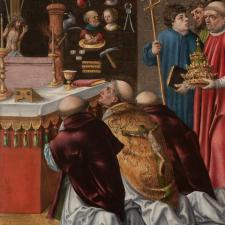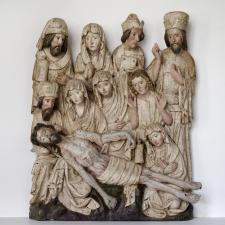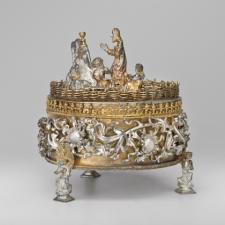The Eucharist is one of the fundamental parts of the Cult of Christianity, and through it the Last Supper of Jesus Christ is commemorated by the partaking of wine and bread and giving thanks for salvation. The Eucharist has greatly inspired visual arts due to its special and essential place in Christian life.
The words from the Prayer of Kunigunde are the motto for the exhibition devoted to the reverence of the altar sacrament and its manifestations in Christian art. This composition in verse, which was first recorded around 1300 in the breviary of Kunigunde, the abbess of St. George's Convent, daughter of King Ottokar II, celebrates the mystery of the Eucharist and the sacramental presence of the Saviour in the transformed "wafer". The extraordinarily talented and educated author points to the paradoxes of God's nature and His incarnation, which cannot be understood rationally; they can only be accepted on faith or approached through artistic means.
The celebration of the Eucharist, established during the Last Supper of Jesus Christ, has special status among the means of God's grace, and it has been one of the central concepts of the Christian Church since its early days. During the High and Late Middle Ages, the Eucharistic piety became one of the central themes of European culture and permeated all spheres of life in the society of that time. The various forms of Eucharistic reverence are documented in many remarkable architectural monuments, sculptures, paintings and crafts. If viewed in general, those works ceaselessly remind us of the variability of meanings, messages and functions that keep interconnecting, overlapping, combining, vanishing and reappearing.
The exhibition is divided into several sections that present the models of the Eucharist, its establishment and celebration, including the special implements and vessels for respectful handling of the Most Sacred of all Sacraments, Eucharistic miracles and allegories, the story of Christ's passion and independent depictions of Christ's body in art. Most exhibits come from the Late Middle Ages, with several additions reflecting the theme of the Eucharist from the Baroque period and from the 20th century.
The Gallery of West Bohemia in co-operation with Olomouc Museum of Art
and the Royal Canonry of Premonstratensians at Strahov, Prague.
|
|







